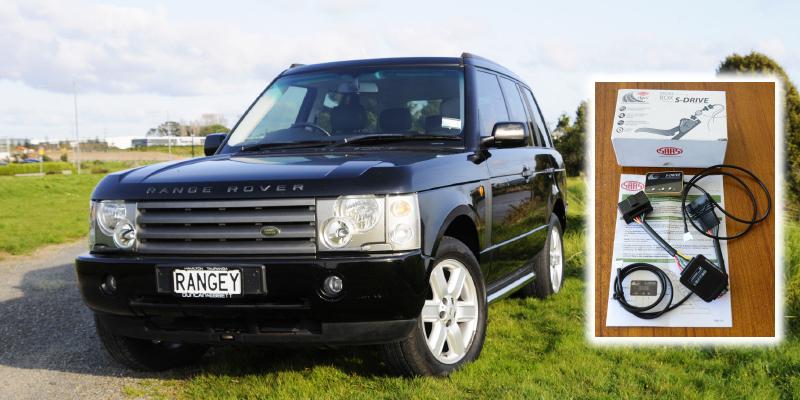During one of our NZ4WD management meetings the subject of throttle controllers came up and it was mentioned that maybe we should try one of these units ourselves considering the increased awareness of these controllers are currently receiving.
It seemed I had the only vehicles within the current NZ4WD fleet, namely the Discovery 3 or alternatively the Range Rover, which is mostly used for road and towing, which were suitable.
And with me now living near Te Awamutu but still a reasonably regular ‘commuter’ to and from Auckland, I not only had the time to fit the unit, but also the means to give it a ‘proper’ test .
Having experienced a similar product on a past test vehicle it was decided, as well, that I knew what I was getting myself into, so I was duly ‘volunteered’ for the job.
And so, after making contact with Warren at 4WDBits, the North Island distributors of the new Trax by SAAS S-Drive, it was agreed that they could supply a unit for my Range Rover, so that was to be the test vehicle
S-Drive 101
Before we jump to the fitting and testing of an electronic S-Drive throttle controller let’s take a brief look at what it is and how it works.
In the good old days before ‘drive–by-wire’ technology, vehicles had accelerator cables direct to the throttle body which opened depending on how much throttle you asked for when putting your foot down. These days, however, electronic potentiometers and sensors have replaced the accelerator cables. The sensor at the pedal tells the vehicle's ECU (engine control unit or computer) how far down the pedal has been pressed and in turn, the ECU sends a signal to the actuator to increase airflow to the engine.
Where this becomes an issue is as the voltage ramps up, it ramps up slowly. And, unlike old cable setups there is no instant boot mashing your accelerator because vehicle manufacturers tend to tune-in smooth throttle response to minimise strain on the vehicle. The delay from the moment the accelerator pedal is pressed, to the time the signal gets to the throttle, is otherwise known as “lag”.
This is where throttle controllers like the SAAS S-Drive are beneficial in that it reduces (and in some vehicles, eliminates) lag by giving the driver the ability to adjust the throttle's sensitivity and shortening the response time between the accelerator and throttle body.
Plug’n play!
Once fitted there are five modes; Comfortable, Sport, Racing, Fuel saving, and Normal (factory settings). Each of the non-factory modes in turn has nine adjustability settings for sensitivity allowing you to choose a setting for the type of driving you are doing, like using comfortable for smooth acceleration, or economy which is designed for fuel saving with a slower and smoother acceleration and also more gentle in tricky off road situations.
The Terrain Response systems in late model Land Rover Discoverys and Range Rovers also do a similar thing by changing the sensitivity of the throttle sensor for various terrain modes selected, but even then S-Drive still have a unit to improve the responses ever further on some models.
Most of these throttle controllers are able to be fitted in minutes as they are mostly a ‘plug-in-and go’ type unit. The S-Drive has a wiring loom with plugs that plug into the Accelerator Pedal Position (APP) sensor or potentiometer and the wiring loom to the throttle controller. In turn, most 4WDs including utes have access under the dashboard and an accelerator pedal that allows reasonable access to unplugging the existing plug and plugging the unit in place.
It’s then a simple matter of plugging the small S-Drive controller into the loom and finding a suitable spot for the read-out unit, peeling off the backing and sticking it to the dash.
Next step
In saying that fitting the unit to my Range Rover took considerably longer than I’d imagine it would to a contemporary ute because of the Rangie’s plush, upmarket interior, sound proofing and wall to wall carpet.
My Range Rover also uses an ‘organ’ type accelerator pedal that stands alone. After deciding that the wiring would be behind what appeared to be a cover held on with some small torx screws I was initially delayed when I found I had every size of driver except the one I needed (a T9).
However after trying our good friend Mr Google for information on the Range Rover accelerator pedal box I found out the plug is actually situated on the right hand side, well hidden from view and with only about 40mm space between the pedal and the kick panel.
That little issue sorted I now have the S-Drive installed and in use and will report back in the next issue of the mag about what it is like to use, and the difference the various mode options make in terms of pedal feel and action, as well as the difference they make to performance, economy and general drivability.




